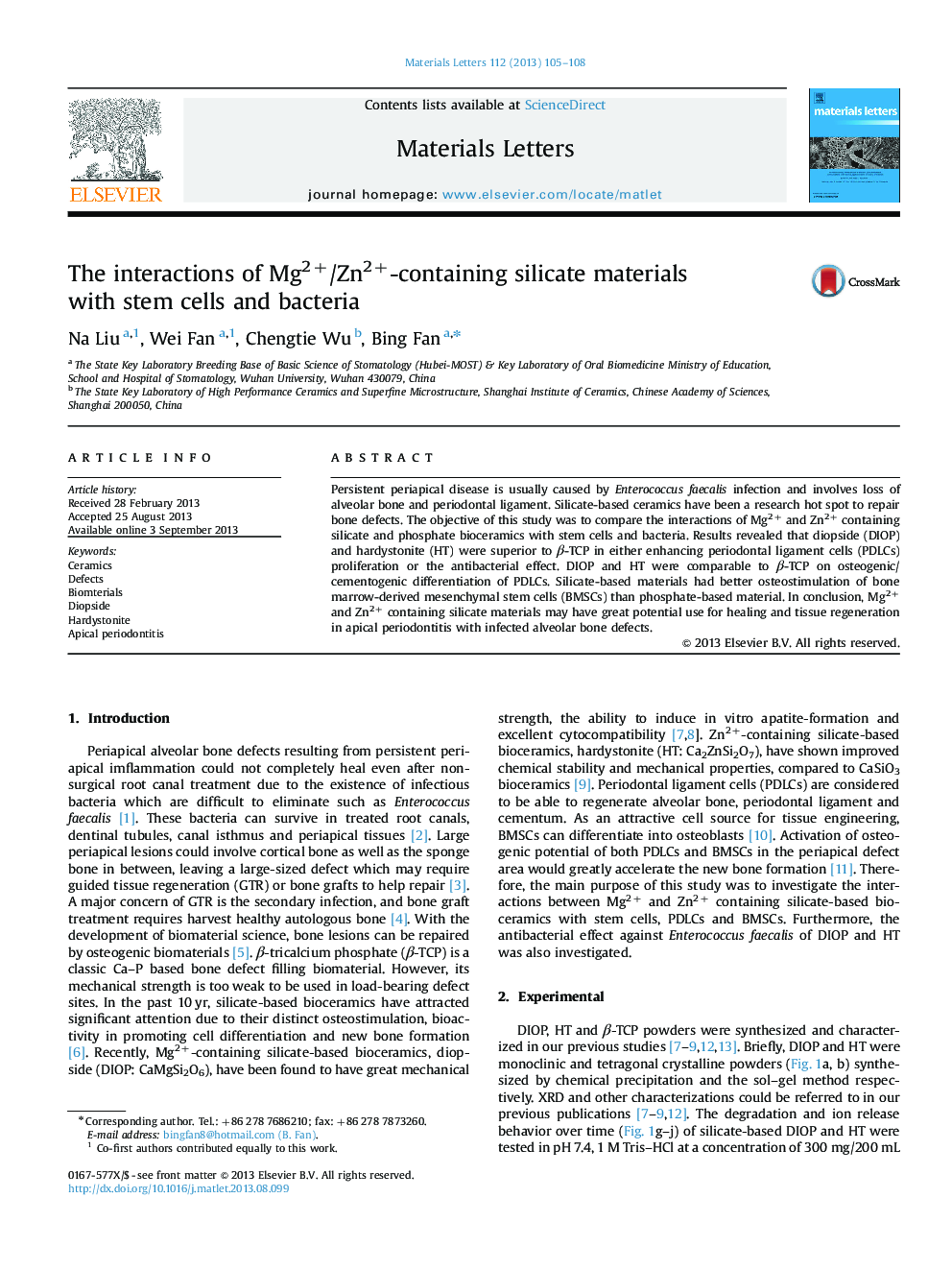| Article ID | Journal | Published Year | Pages | File Type |
|---|---|---|---|---|
| 8021280 | Materials Letters | 2013 | 4 Pages |
Abstract
Persistent periapical disease is usually caused by Enterococcus faecalis infection and involves loss of alveolar bone and periodontal ligament. Silicate-based ceramics have been a research hot spot to repair bone defects. The objective of this study was to compare the interactions of Mg2+ and Zn2+ containing silicate and phosphate bioceramics with stem cells and bacteria. Results revealed that diopside (DIOP) and hardystonite (HT) were superior to β-TCP in either enhancing periodontal ligament cells (PDLCs) proliferation or the antibacterial effect. DIOP and HT were comparable to β-TCP on osteogenic/cementogenic differentiation of PDLCs. Silicate-based materials had better osteostimulation of bone marrow-derived mesenchymal stem cells (BMSCs) than phosphate-based material. In conclusion, Mg2+ and Zn2+ containing silicate materials may have great potential use for healing and tissue regeneration in apical periodontitis with infected alveolar bone defects.
Related Topics
Physical Sciences and Engineering
Materials Science
Nanotechnology
Authors
Na Liu, Wei Fan, Chengtie Wu, Bing Fan,
